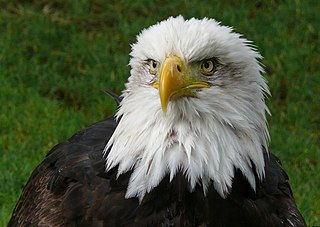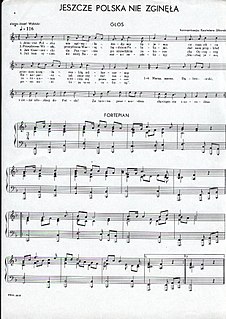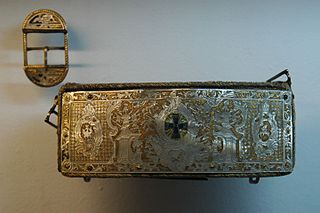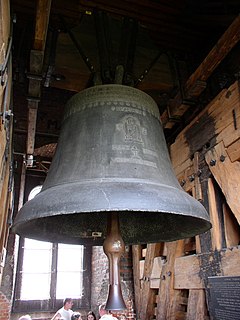 W
WThroughout most of the history of Poland, the banner of Poland was one of the main symbols of the Polish State, normally reserved for use by the head of state. Although its design changed with time, it was generally a heraldic banner, i.e., one based directly on the national coat of arms: a crowned White Eagle on a red field. The banner should not be confused with the flag of Poland, a white and red horizontal bicolor, officially adopted in 1919.
 W
WThe Black Madonna of Częstochowa, also known as Our Lady of Częstochowa, is a venerated icon of the Blessed Virgin Mary housed at the Jasna Góra Monastery in Częstochowa, Poland. Several Pontiffs have recognised the venerated icon, beginning with Pope Clement XI, who issued a Canonical Coronation to the image on 8 September 1717 via the Vatican Chapter. It has also merited three Pontifical golden roses to date.
 W
WGod, Honour, Fatherland or Honour and Fatherland is one of the unofficial mottos of Poland. It is commonly seen as the motto of the military of Poland, and has been confirmed as such by several Polish legal decrees. It traces its history to the era of partitions of Poland and Polish service in Napoleonic army.
 W
WBogurodzica, in English known as the Mother of God, is a medieval Roman Catholic hymn composed sometime between the 10th and 13th centuries in Poland. It is believed to be the oldest religious hymn or patriotic anthem in the Polish language, which was traditionally sung in Old Polish with the Greek phrase Kyrie eleison – "Lord, have mercy". While its origin is not entirely clear, several scholars agree that Saint Adalbert of Prague is the likely author. Polish knights chanted Bogurodzica prior to their engagement at the Battle of Grunwald and it also accompanied the coronation ceremonies of the first Jagiellonian kings.
 W
WThe coat of arms of Poland is a white, crowned eagle with a golden beak and talons, on a red background.
 W
WDrzymała's wagon was a house on wheels built by peasant Michał Drzymała(1857-1937) as a protest against Imperial Germany's policy of Germanization in its Polish territories. Drzymała was not only able to circumvent German building regulations by moving his home every day, but with his wagon-home, became a Polish folk hero during the Partitions of Poland.
 W
WEagle is the common name for many large birds of prey of the family Accipitridae. Eagles belong to several groups of genera, some of which are closely related. Most of the 60 species of eagle are from Eurasia and Africa. Outside this area, just 14 species can be found—2 in North America, 9 in Central and South America, and 3 in Australia.
 W
WThe flag of Poland consists of two horizontal stripes of equal width, the upper one white and the lower one red. The two colors are defined in the Polish constitution as the national colours. A variant of the flag with the national coat of arms in the middle of the white fess is legally reserved for official use abroad and at sea. A similar flag with the addition of a white eagle is used as the naval ensign of Poland.
 W
WFor our freedom and yours (Polish: Za naszą i waszą wolność) is one of the unofficial mottos of Poland. It is commonly associated with the times when Polish soldiers, exiled from the partitioned Poland, fought in various independence movements all over the world. First seen during a patriotic demonstration to commemorate the Decembrists, held in Warsaw on January 25, 18311, it was most probably authored by Joachim Lelewel. The initial banner has the inscription in both Polish and Russian, and was meant to underline that the victory of Decembrists would also have meant liberty for Poland. The slogan got shorter with time; the original had the form 'In the name of God, for our freedom and yours' ('W imię Boga za Naszą i Waszą Wolność'). The original banner has been preserved in the collection of Muzeum Wojska Polskiego in Warsaw.
 W
WGaude Mater Polonia was one of the most significant medieval Polish hymns, written in Latin between the 13th and the 14th century to commemorate Saint Stanislaus, Bishop of Kraków. Polish knights sang and chanted the hymn after victory in battle, presumably to one of the Gregorian melodies associated with the Eucharistic psalm O Salutaris Hostia on which it is based. It's widely considered a historical, national anthem of the Kingdom of Poland and the Polish–Lithuanian Commonwealth.
 W
WThe Grunwald Swords were a mocking "gift" sent by Ulrich von Jungingen, the Grand Master of the Order of Teutonic Knights, to King Władysław II Jagiełło of Poland and Grand Duke Vytautas of Lithuania on 15 July 1410, just before the Battle of Grunwald (Tannenberg). The gift, a pair of simple bare swords, was a symbolic invitation to engage Jungingen's forces in battle. After the Polish–Lithuanian victory, both swords were taken as a war trophy by King Władysław II to Kraków, Poland's capital at the time, and placed in the treasury of the Royal Wawel Castle.
 W
WSt. Mary's Trumpet Call is a traditional, five-note Polish anthem closely bound to the history and traditions of Kraków. It is played every hour on the hour, four times in succession in each of the four cardinal directions, by a trumpeter on the highest tower of the city's Saint Mary's Basilica. The noon performance is broadcast via radio to all of Poland and the world.
 W
WThe Kotwica was a World War II emblem of the Polish Underground State and Armia Krajowa. It was created in 1942 by members of the AK Wawer Minor sabotage unit, as an easily usable emblem for the Polish struggle to regain independence. The initial meaning of the initials PW was Pomścimy Wawer. This was a reference to the Wawer massacre, which was considered to be one of the first large scale massacres of Polish civilians by German troops in occupied Poland.
 W
WMilitary eagles are military insignia used in the Polish Armed Forces, based on the White Eagle of the Polish coat of arms. They are used on elements of military uniforms such as hats and buttons, as well as on military banners, flags, medals, emblems, publications etc. One variant exists for each of the five branches of the Armed Forces. Additionally, the Minister of National Defence, the Marshal of Poland, and generals and admirals use their own variants.
 W
WThe naval ensign of the Republic of Poland is a swallowtailed horizontal bicolor of white and red with the national coat of arms in the middle of the white stripe. It has been used by the Polish Navy since 1919.
 W
WOur Lady of Sorrows, Queen of Poland, Our Lady of Licheń, or Virgin of Licheń is a Roman Catholic icon of the Blessed Virgin Mary venerated by its Polish faithful dating from 1772 and is permanently enshrined within the Sanctuary of Our Lady of Licheń, in central Poland, which was built to honor it, and receives about 1.5 million pilgrims per year.
 W
WPierogi are filled dumplings made by wrapping unleavened dough around a savoury or sweet filling and cooking in boiling water. They are often pan-fried before serving.
 W
W"Mazurek Dąbrowskiego", in English officially known by its incipit "Poland Is Not Yet Lost", is the national anthem of Poland.
 W
WThe Air Force checkerboard is a national marking for the aircraft of the Polish Air Force, equivalent to roundels used in other nations' air forces. It consists of four equal squares, of which the upper left and lower right are white, and the other two – red. These are surrounded by a border of inverted (counterchanged) colors 1/5 the thickness of a single square. In 1993 the colors were reversed.
 W
WPolish National Flag Day is a national holiday in Poland introduced by an act issued on 20 February 2004. The holiday is celebrated on the day between two national holidays: 1 May and 3rd of May
 W
WPro Fide, Lege et Rege was an 18th-century motto of the Polish–Lithuanian Commonwealth and then of Poland. It superseded the earlier Si Deus Nobiscum quis contra nos and was featured on a variety of buildings, military decorations and equipment. It remains the motto of the Order of the White Eagle. The slogan of the order was that of the king's pro fide lege et grege. The device of the cavaliers was pro fide lege et rege.
 W
WThe Rodło is a Polish emblem used since 1932 by the Union of Poles in Germany. It is a stylized representation of the Vistula River and Kraków as the wellsprings of Polish culture.
 W
WRota is an early 20th-century Polish poem, as well as a celebratory anthem, once proposed to be the Polish national anthem. Rota's lyrics were written in 1908 by activist for Polish independence, poet Maria Konopnicka as a protest against German Empire's policies of forced Germanization of Poles. Konopnicka wrote Rota in 1908 while staying in Cieszyn. The poem was published for the first time in Gwiazdka Cieszyńska newspaper on 7 November. The music was composed two years later by composer, conductor and concert organist, Feliks Nowowiejski.
 W
WScythemen, also known as scythe-bearers is the term for soldiers armed with straightened war scythes. First appearing in the Kościuszko Uprising of 1794, scythemen quickly became one of the symbols of the struggle for Polish independence.
 W
WSzczerbiec is the ceremonial sword used in the coronations of most Polish monarchs from 1320 to 1764. It now is displayed in the treasure vault of the royal Wawel Castle in Kraków, as the only preserved part of the medieval Polish crown jewels. The sword is noted for its hilt, decorated with magical formulae, Christian symbols, and floral patterns, as well as for the narrow slit in the blade which holds a small shield with the coat of arms of Poland. The name of the sword, derived from the Polish word szczerba, may be rendered into English as "the Notched Sword" or "the Jagged Sword", though the edges of its blade are straight and smooth.
 W
WThe Royal Sigismund Bell is the largest of the five bells hanging in the Sigismund Tower of the Wawel Cathedral in the Polish city of Kraków. It was cast in 1520 by Hans Behem and named after King Sigismund I of Poland, who commissioned it. The bell weighs almost 13 tonnes and requires 12 bell-ringers to swing it. It tolls on special occasions, mostly religious and national holidays, and is regarded as one of Poland's national symbols.
 W
W"Warszawianka 1831 roku", "La Varsovienne" is a Polish patriotic song written by Casimir François Delavigne with music by Karol Kurpiński.
 W
W"My, Pierwsza Brygada", also known as Marsz Pierwszej Brygady and Legiony to żołnierska nuta, is one of the best-known patriotic marches of the Polish Legions formed during World War I by Józef Piłsudski.